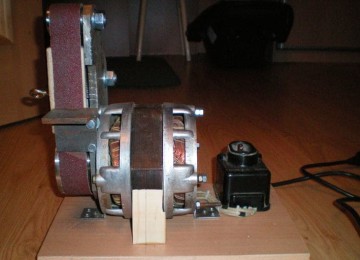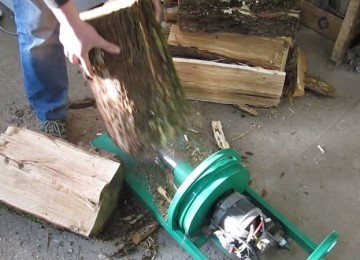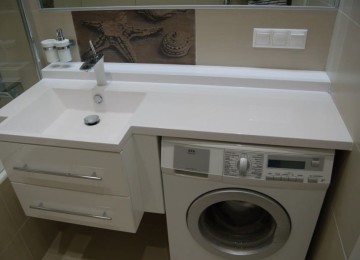Choosing a siphon to connect a washing machine is not easy. When purchasing, you need to take into account not only the brand of the product, but also its technical characteristics, as well as compatibility with a specific brand of machine.
What is a siphon and its purpose
A siphon is usually called a vessel that is made of stainless steel or plastic. It is used to naturally create a hydraulic seal between household appliances (in this case, a washing machine) and the sewer system to which these household appliances are connected. Modern plumbing standards require the mandatory installation of a siphon under the bathtub, kitchen sink, as well as when installing and connecting dishwashers (washing machines). The main task of the siphon is to create a water barrier between the drain of household appliances and the sewer. Using this device, the following important and necessary tasks are solved:
- no unpleasant sewer odors enter the apartment;
- the siphon is a collection of dirt and small objects that fall from clothes being washed into the drain of the machine;
- sewer pipes do not become clogged;
- The washing machine pump wears out less and, accordingly, lasts longer, since the siphon significantly reduces the load on it.
The siphon can be compared to the dust collector of a vacuum cleaner. It is known that it can even “suck in” earrings and rings that fall into the drain from the pockets of laundry. If there were no siphon, it would take a long time to look for lost jewelry in sewer pipes.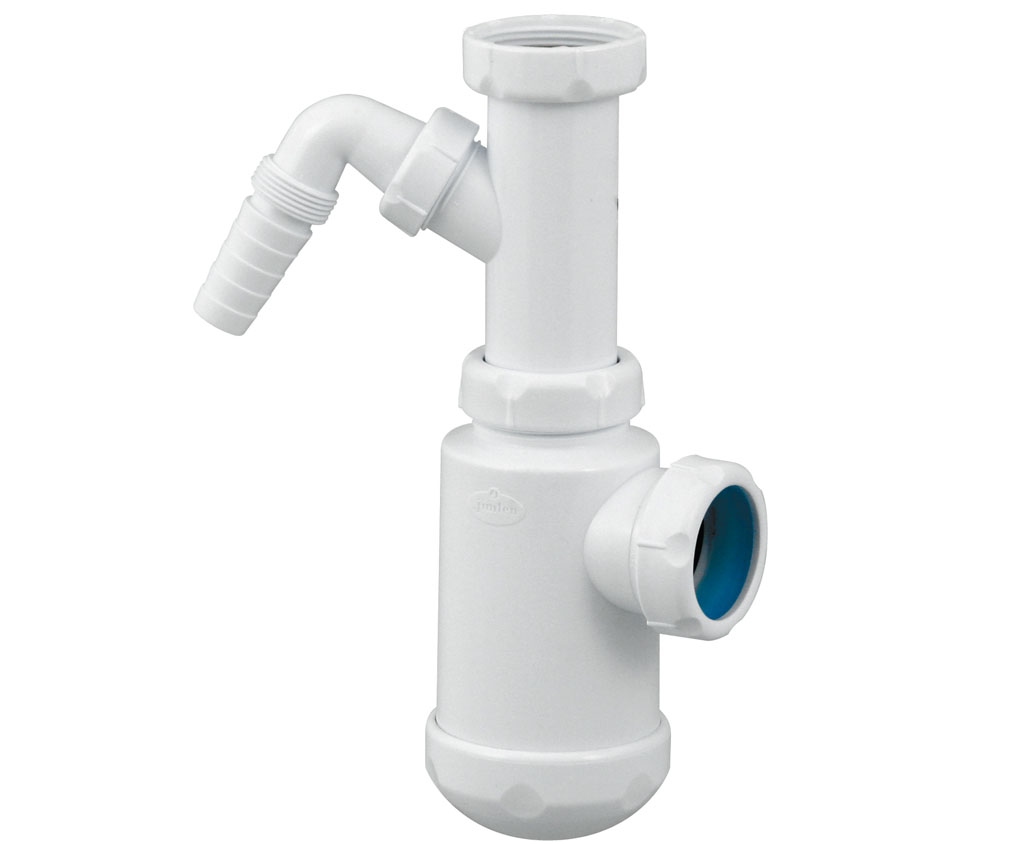
If you operate the machine without a siphon, this will quickly lead to a blockage in the sewer. Therefore, it is better to spend money on buying a device than to spend a long time clearing the resulting blockages, which pose a danger to all residents of a multi-story building.
In some cases, the siphon is included with the washing machine, but sometimes it must be purchased separately. When choosing, you should consult with a specialist, as model incompatibility is possible.
Instead of a siphon, some users successfully use a flexible hose, but in this mode of operation, the washing machine pump quickly fails due to the fact that it has too much load.
Types of siphons
These devices are classified as follows:
- external;
- internal;
- combined.
Siphons are also divided into built-in and splitters. There are two types of built-in valves - with diverter and non-return valve.
Combined devices are so called because they are designed for several objects at the same time. The most popular place for this type of siphon is under the sink in the kitchen or bathroom.Combination models are possible, which are intended simultaneously for a kitchen sink, dishwasher and washing machine. These models have a separate connection for connecting the washing machine. It happens that at the time of installation of the washing machine in the kitchen there is already a standard siphon under the sink. In this case, it must be dismantled and replaced with a similar model, but one that already has a pipe.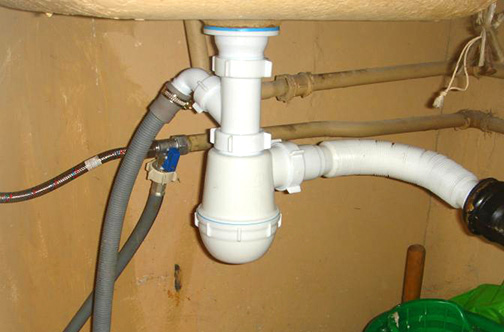
The main advantages of the combined device are that such a siphon is very easy to install; even an inexperienced home craftsman can handle the job without the help of a specialist. This model is also convenient to use; it is compact and convenient in shape. A combined siphon is an ideal option if the washing machine is located very close to the bathroom or kitchen sink. However, if the automatic machine is located in the corridor, this option will not work.
Sometimes it is impossible to use a combined design. For example, if the sink and washing machine are far from each other, you can connect to the sewer pipes in another place. The solution in this case is the so-called external siphon. Its peculiarity is that it is intended exclusively for the washing machine and is not associated with other home appliances. The disadvantage of the external siphon is that it has rather large dimensions. In this regard, it will no longer be possible to place the washing machine close to the wall. There will be a gap between the machine and the wall, which is not very convenient.
Built-in
Built-in models have the following advantages:
- compactness;
- long service life;
- Possibility to place the washing machine close to the wall.
With bend
The built-in model with an outlet is convenient because it can be placed inside the wall. A short pipe is brought out, and a hose is attached to it to drain the water. However, to install such a model, it is necessary to drill a cavity in the wall to place a siphon there. Therefore, installation of a built-in device will cost more and take more time compared to an outdoor model.
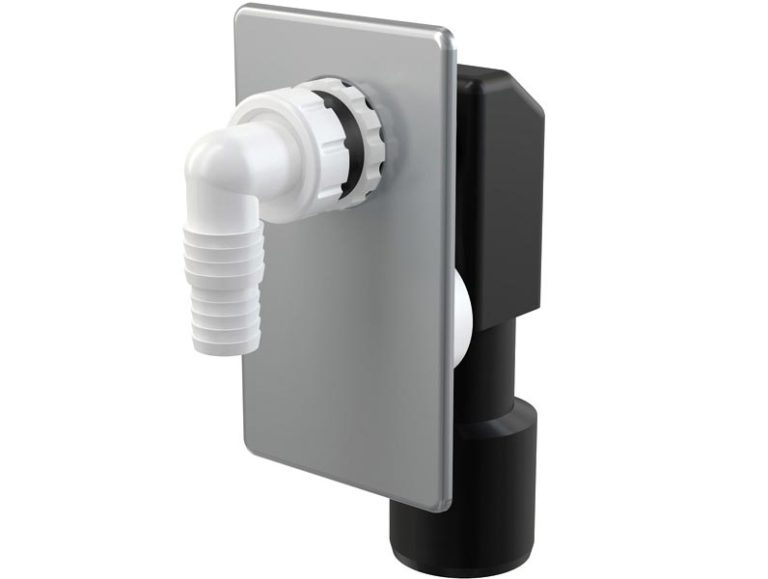
wall-mounted siphon
In order to close a hole made in the wall, this model usually comes with a special decorative element for closing the hole. When installing an internal siphon in a wall that is then planned to be covered with tiles, you must first lay the tiles and then place the device inside, otherwise you will have to drill out the tiles later.
With check valve
Some models have a check valve. It is installed when connecting the machine and connected to the sewer. The purpose of the check valve is to prevent water from draining spontaneously. Also, such a valve serves as a natural barrier to wastewater that can enter the washing machine from the sewer hole if the pipes become clogged.
During the installation process, it is necessary to use a connection sleeve, inside which the valve is placed. There are many similar models of siphons. Among them are options designed specifically for draining a washing machine, and those that are connected to the water intake pipe.
There are two options for installing a check valve. Firstly, if the washing machine already has a standard siphon connected, you need to purchase an additional anti-siphon valve.If a sewer accident occurs, it will not allow wastewater to penetrate inside the machine.
If the washing machine has not yet been installed, and installation is just planned, you need to buy a combined siphon, which has not only a check valve, but also an additional pipe. Such a device will serve as reliable and durable comprehensive protection for both an automatic washing machine and other household appliances.
It should be noted that most modern machines already have an anti-siphon valve built-in. However, if the model is outdated, it makes sense to use a device with a check valve during installation, purchasing it additionally. Only in this case can we talk about creating a reliable barrier between the water in the machine and the sewerage system.
Siphon splitter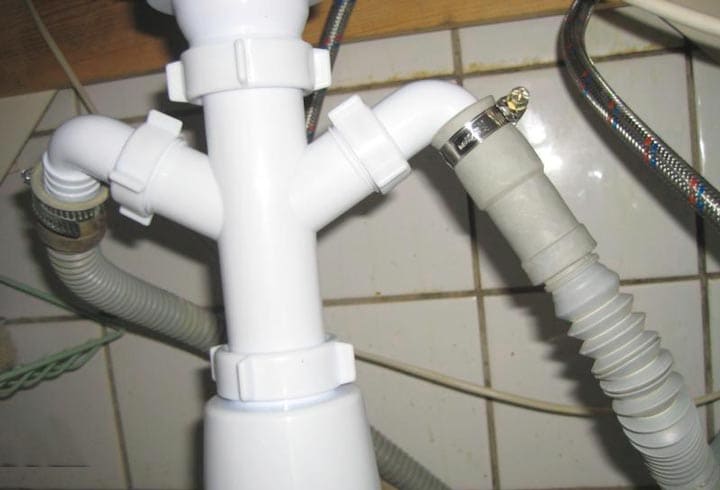
This model is convenient because you can connect both a washing machine and a sink at the same time. Externally, this model looks like a tee made of plastic. This tee has three outlets in different directions:
- the first exit is directed to the sewer pipe;
- the second outlet is a container for a corrugated hose, which belongs to an automatic washing machine;
- the third outlet is a similar container, but belongs to the sink drain.
If there is very little space, the ideal solution would be a siphon model for a washing machine built into the wall. This device is compact because most of the product rests against the wall with the sewer pipe. From the outside, only a small part of the body is visually visible, from which there is a pipe to the drain hose of the automatic washing machine. Sometimes this model is called hidden.A hidden siphon may have one outlet or several.
If at least one outlet of the siphon-splitter is faulty, it is necessary to urgently dismantle the device for subsequent repairs, otherwise it is possible that wastewater from the sewer pipe may end up in the drain of the washing machine or washing machine.
Is it possible to do without a siphon?
Instead of drain fittings, you can successfully use a flexible hose. It comes complete with most modern models. The most important advantage of this option is ease of installation; installation will not take much time and effort.
During the installation process, you can simply take the drain hose and throw it over the edge of the bathtub, securing it using special fittings. In total, the installation of such a drainage system will take no more than ten minutes. In order to provide a more reliable barrier, it is necessary to insert the hose into the pipe. However, this option has several important disadvantages that every owner of an automatic washing machine should be aware of:
- to form a hydraulic seal, it is necessary to deform the drain hose, giving it a parabola shape, which will lead to excessive load on the hose and its rapid wear;
- According to the rules, the drainage hose must be located at a slope along the length of the automatic machine up to the point of the pipe at which the drainage takes place. But here there is no such possibility, so the pump wears out quickly;
- if the hose is directed into the sink or bathtub, water from the washing machine will constantly drain inside, which will lead to rapid contamination of the plumbing. Also, in this case, there is always a risk of carelessly touching the sleeve, which can lead to a large amount of water getting onto the floor.
In addition, it must be borne in mind that if the length of the drain hose is short, the hose will have to be further lengthened using corrugations and connecting elements. This inevitably leads to overload and rapid wear of the washing machine. Also, if there are many seams on the sleeve, this significantly increases the risk of leaks.
Criteria for choosing a siphon for a washing machine
When choosing, you must keep in mind that the price of the product is determined by its configuration. In addition to price, it is necessary to take into account such parameters as:
- compatibility with a specific model of automatic washing machine;
- the material from which the device is made;
- manufacturer;
- life time.
The cheapest option is an external siphon. However, it is quite bulky, does not look aesthetically pleasing and takes up a lot of space, “eating up” space. You need to buy it if the washing machine and the sewer pipe are far from each other. In other cases, it is recommended to opt for more expensive and compact models.
The most expensive, but also the most convenient models are internal or built-in. They are installed inside the wall and will not be visible from the outside, so installation in any room of the living space is allowed. However, you must first make a special niche. The size of the niche should be slightly larger than the dimensions of the siphon. This model is placed in a convenient, compact and ergonomic case, and a metal or plastic decorative element is placed outside. From the outside, only the fitting, bent at a ninety-degree angle, will be visible.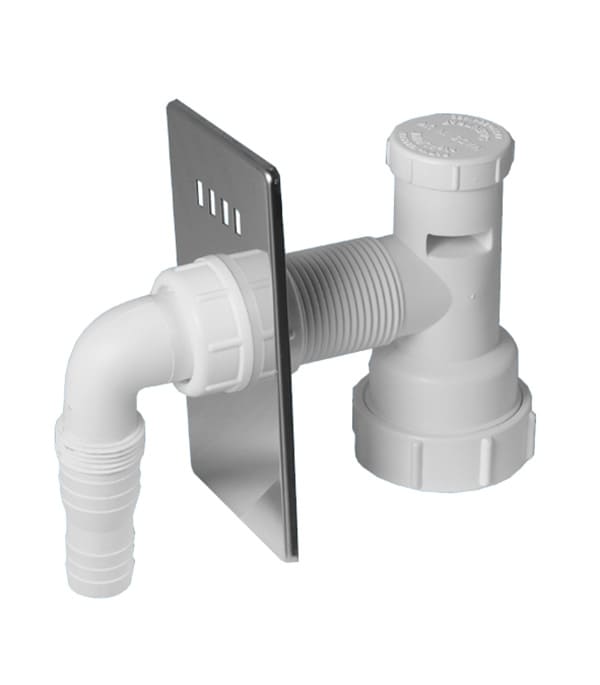
Rules and nuances of connecting a siphon
When installing and connecting the siphon for an automatic washing machine, you must keep the following in mind:
- a combined siphon is suitable if several drainage hoses need to be connected to the sewer pipe;
- If the washing machine does not have a non-return valve (this usually happens with outdated models), you need to immediately purchase one. In this case, if an accident in the sewer unexpectedly occurs, the user will be guaranteed to be protected from flooding of the apartment;
- when there is little space in the bathroom, it is better to install a flat siphon;
- Do not be tempted by the low price of the drain device and components. A good model, by definition, cannot be very cheap.
A siphon for a washing machine is a device that wears out quite quickly with intensive use. Therefore, the cheaper the model, the less likely it is that it will last long. All plastic parts of the siphon must first be checked for strength.
All parts should be secured as securely as possible; all fastenings must be checked before use. You should also pay attention during the installation process to ensure that the rubber gaskets are placed evenly and do not move. Thus, the compaction will be distributed evenly around the entire circumference. Otherwise, areas without compaction may appear, which will lead to serious equipment malfunctions.
Before installation, it is imperative to study the operating instructions for the device and strictly follow the installation recommendations given in these instructions. If you have the slightest doubt, you should invite a specialist. Incorrect installation actions can lead to a serious accident occurring the first time you start the washing machine.
Before you begin installing the equipment, you must carefully examine all the components of the siphon and make sure that they are not damaged or defective. To do this, it is necessary to examine the threads of each connection. For ease of use, before starting installation, you need to put all the elements in front of you in the order in which you plan to secure them: from first to last.
To work, you will need a screwdriver and oilcloth, as well as plastic electrical tape, a set of different-sized rubber gasket rings and a bucket with a rag (in case you have to eliminate traces of leaks). To ensure that nothing leaks at the joints and seams, it is necessary to treat these areas with expensive silicone sealant. To dismantle the old system, it is necessary to remove the previous siphon and the sewer pipe that was previously connected to it. After this, a careful inspection of the coupling should be carried out. If there is any damage or defects on the coupling, it must be replaced with a new one, while all dirt and the previously applied old layer of sealant are removed from the socket.
A metal rim must be attached to the upper edge of the bathtub. Next, the siphon pipe is attached to it. After this, a siphon must be connected to the drain hole; this operation is performed using a drum. When the installation is completed, you need to take the other end of the corrugation and connect it to the sewer pipe, securely securing the connection.
In this case, you need to be as careful as possible so that the rubber sealing rings and other small parts do not get lost during the work.When all connections have already been checked for strength, you can start the washing machine for the first time. Plastic nuts can be tightened by hand. For metal nuts you will need a wrench of the appropriate size. A uniform thin layer of sealant must be applied to rubber O-rings before installation.
Special connections, called fittings, are connected like a “pipe in pipe” to fully connect all hoses from the siphon body and the washing machine. It is worth noting that for a washing machine they have very high reliability, but if an ordinary union nut or small screw is not screwed in, a leak may occur. Nuts are used primarily for fixation, since during the process of draining water, slight vibrations occur in the drain hose itself - this can even lead to the fitting itself jumping off.
Most often, siphons for automatic washing machines are made of plastic. This material is good because it does not require anti-corrosion treatment. Because plastic doesn't rust. In some cases, brass and copper alloys can be used to make siphons. Such devices are also resistant to corrosion. However, over time, a film forms on the metal due to frequent and intense contact with water - the result of oxidation.
Products from domestic manufacturers are reliable, but at the same time, their aesthetic qualities, unfortunately, leave much to be desired. Compared to foreign products, domestic siphons have the simplest possible design and a relatively low price, their cost starts from one hundred rubles.
Connecting a siphon yourself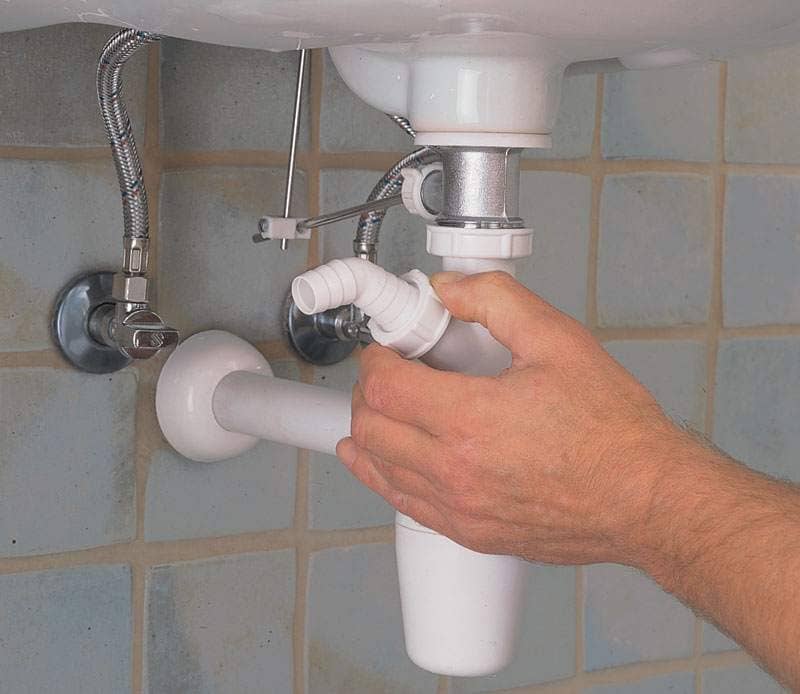
Connecting a siphon with your own hands depends on which model of device the user has chosen. However, the general recommendations will be approximately the same. Step-by-step installation instructions are as follows:
- cut a hole in the material with which the wall is lined if the siphon is mounted at some distance from the main wall (on a metal profile or wooden beams);
- gain access to the pipes through the hole made;
- connect to the pipe and check the reliability of the connection;
- install a decorative element with a pipe that is used to connect to the drain hose.
If the walls in the apartment are made of concrete, it is necessary to hollow out a niche slightly larger than the siphon, and then make grooves and lay the pipeline.
Installing an external drainage device is much easier. To do this, you just need to remove the standard siphon under the sink and replace it with a new one, or install a pipe with a sewer outlet and insert a drain hose into this pipe.
Installation of a standard siphon with outlet
To install a standard siphon with outlet, you must perform the following manipulations:
- attach a raised o-ring to the pipe;
- connect the siphon with the gasket and make sure that the connection is tight and airtight;
- tighten the screw;
- connect the device to the sewer using a corrugation.
Upon completion of installation, it is necessary to check the equipment.
Installation of an external siphon
Installing an external drainage device is much easier. To do this, you just need to remove the standard siphon under the sink and replace it with a new one, or install a pipe with a sewer outlet and insert a drain hose into this pipe.In this case, a gap will inevitably remain between the washing machine and the wall, and this is one of the main disadvantages of external devices.
Installation of a hidden siphon
To install a hidden type device, you must follow the following sequence of actions:
- put the device on the sewer pipe;
- check that the remaining outlets are always located on the outside of the wall;
- decorate using the overlay that comes with the kit or some other method;
- put the drain hose from the automatic washing machine onto the outlet that is located outside;
- Check the tightness of the hose and, if necessary, tighten it using a nut.
Next, you should test the equipment for possible leaks.
Features of connecting to the sink
When connecting a siphon for an automatic washing machine to a sink, you must keep in mind the following important recommendations:
- during installation, do not lengthen the hoses so as not to create excessive load on the pump;
- the hose must be pulled tightly onto the outlet pipe, avoiding gaps;
- The siphon must be located at a height of 800 mm or more above the installation site.
Following these simple rules will help you successfully connect and avoid problems with the further operation of the equipment.
Checking the functionality of the equipment
When checking equipment, you need to pay attention to the following aspects:
- all fasteners must be tightened as tightly as possible;
- if the hoses have seams and joints, gaps should not be allowed between them;
- where the siphon connects to the drain hole, all bolts and nuts must be tightened especially tightly, because this is where leaks most often form.
In order to identify leaks, you should use toilet paper or paper napkins. The paper is placed at the seams and joints. Next, the washing machine starts. If the paper is wet in some places, it means it is leaking there, and to solve this problem you need to tighten all the fasteners more tightly.
Conclusion
It is quite possible to install a siphon for a washing machine yourself at home. The main thing is that the product is suitable for a specific model of automatic washing machine and is of good quality. Then there should be no problems during installation.







